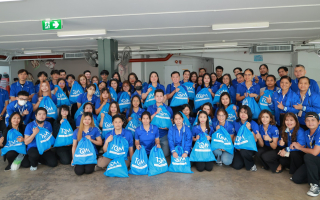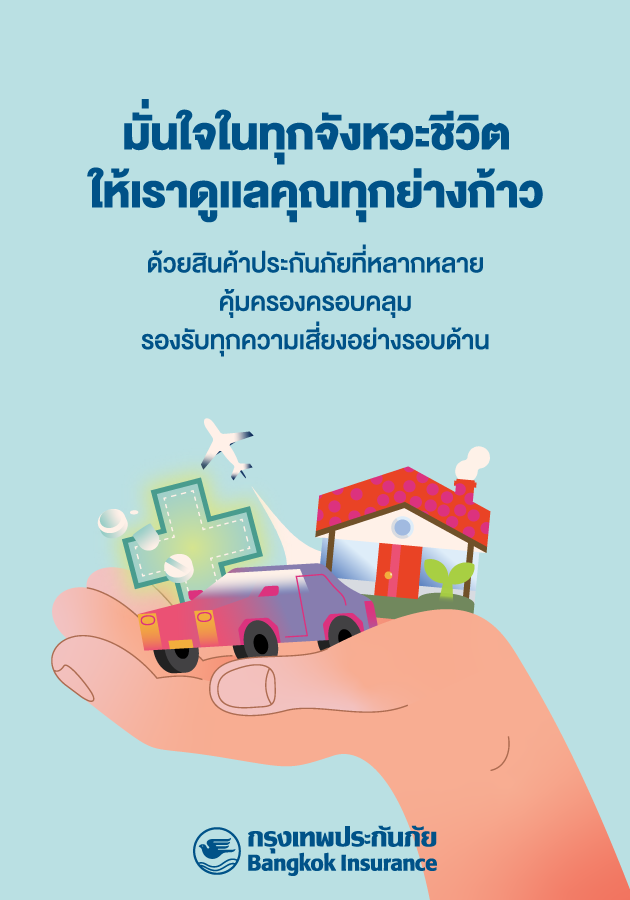เทเลนอร์เผย 7 เทรนด์เทคโนโลยีมาแรงปี 2562

เทเลนอร์เผย 7 เทรนด์เทคโนโลยีมาแรงปี 2562
4 ธันวาคม 2562 – ศูนย์วิจัยเทเลนอร์ เผย 7 แนวโน้มเทคโนโลยีมาแรงปี พ.ศ.2562 ชี้นักพัฒนา ผู้กำหนดนโยบายและเอกชนหันมาให้ความสำคัญกับ “การใช้ประโยชน์จากเทคโนโลยีอย่างมีความรับผิดชอบ” มากขึ้น ท่ามกลางการพัฒนาอย่างรวดเร็วในหลายปีที่ผ่านมา
นายบียอน ทาล แซนเบิร์ก หัวหน้าศูนย์วิจัยเทเลนอร์ กล่าวว่า แม้ในรอบปีที่ผ่านมา โลกของเทคโนโลยีเกิดการพัฒนาและเปลี่ยนแปลงอย่างต่อเนื่องและรวดเร็ว แต่จากผลกระทบด้านลบที่เกิดขึ้นจากเทคโนโลยี ทำให้นักเทคโนโลยีกลับมาพิจารณาถึงแง่มุมต่างๆ ของการคิดค้นเทคโนโลยีใหม่ๆ ซึ่งส่งผลกระทบทางลบต่อสังคม ครอบครัวและระดับปัจเจกบุคคล
“แม้เทคโนโลยีจะก้าวหน้าเพียงใด ผู้คนในสังคมต่างกลับมาพิจารณาถึงหลักประกันต่อการใช้เทคโนโลยีอย่างปลอดภัย ชาญฉลาดและสร้างสรรค์” นายแซนเบอร์ก กล่าว และทั้ง 7 แนวโน้มเทคโนโลยีที่คาดการณ์นั้นจะเป็นปรากฏการณ์สำคัญทางเทคโนโลยีที่เกิดขึ้นในปี 2562
ดีพเฟคจะกระจายตัวมากขึ้น
ในช่วงปีที่ผ่านมา ประเด็นการใช้ประโยชน์ทางลบของโซเชียลมีเดียและ AI ได้รับการจับตามองจากสังคม โดยเฉพาะอย่างยิ่ง “ดีพเฟค” (Deepfake) หรือรูปแบบของข้อมูลปลอมที่แพร่กระจายทางโซเชียลมีเดีย ซึ่งคาดว่าในปี 2562 จะเกิดเนื้อหาประเภท “ดีพเฟค” มากขึ้น เนื่องจากการทำงานของโมเดลอัลกอธิรึ่มที่เรียกว่า GANs ที่มีการใช้อย่างแพร่หลายมากขึ้น และเรียนรู้เร็วขึ้น ซึ่งจะเป็นอุปสรรคอย่างมากในอนาคตต่อการแยกแยะระหว่างข้อมูลจริงกับข้อมูลปลอมในโลกดิจิทัล
ทั้งนี้ ดีพเฟคจะเข้ามามีบทบาทและอิทธิพลมากขึ้นในการรณรงค์หาเสียง ซึ่งจะเข้ามาปั่นปวนและให้ข้อมูลเท็จต่อสาธารณชน โดยในปี 2562 ที่จะถึงนี้ ประเทศมหาอำนาจถึง 2 ประเทศ ได้แก่ อินเดียและสหรัฐอเมริกา มีกำหนดจัดการเลือกตั้งและเริ่มรณรงค์หาเสียงประธานาธิบดี
นอกจากนี้ ในปี 2562 จะเริ่มเห็นผู้ให้บริการอินเทอร์เน็ต โอเปอเรเตอร์และหน่วยงานกำกับดูแลจริงจังกับการกำจัดและสร้างภูมิคุ้มกันในการต่อกรกับดีพเฟคคอนเทนท์มากขึ้น
AI จะถูกกำหนดด้วยกรอบจริยธรรม
การพัฒนาของปัญญาประดิษฐ์หรือ AI ได้เกิดการใช้กันอย่างแพร่หลายทั้งในภาคธุรกิจและสังคม อย่างไรก็ตาม ผู้คนในสังคมเริ่มตระหนักถึงผลกระทบของเทคโนโลยีต่อการใช้ชีวิต ซึ่งหนึ่งในนั้นคือเทคโนโลยี AI โดยในปี 2562 จะมีการตรวจสอบการใช้งาน AI จากสาธารณะมากขึ้น ตลอดจนการกำหนดกรอบการใช้งานของ AI โดยในอีกไม่กี่ปีข้างหน้า หน่วยงานภาครัฐและเอกชนจะมีการร่วมกันจัดตั้งกรอบธรรมาภิบาลและจริยธรรมในการใช้ AI เพื่อให้มั่นใจว่าผู้ที่เกี่ยวข้องมีแนวปฏิบัติที่ถูกต้องตามหลักจรรยาบรรณ
การกำหนดกรอบการใช้งานเทคโนโลยีดังกล่าวนั้น เพื่อสร้างความมั่นใจต่อสาธารณะในการใช้ประโยชน์อย่างถูกต้อง โปร่งใส ติดตามได้ และมั่นคง นอกจากนี้ ยังคาดการณ์ว่าในเวทีโลกจะมีการอภิปรายต่อสิ่งที่เกิดขึ้นจากการใช้ประโยชน์ของ AI ในหลายปีที่ผ่านมา ไม่ว่าจะเป็นในทางการเมือง การศึกษาและการพัฒนาทรัพยากรมนุษย์ทางด้าน AI ตลอดจนการลงทุนในเครื่องมือและระบบที่เกี่ยวข้องกับจริยธรรมของการพัฒนาและการใช้ประโยชน์จาก AI
“กรอบจริยธรรมอาจเป็นอุปสรรคต่อการพัฒนานวัตกรรม ซึ่งเห็นได้จากการพัฒนาระบบนิเวศของ AI ที่เกิดขึ้นอย่างรวดเร็วในสหรัฐอเมริกาและจีน ขณะที่ในภูมิภาคที่มีการกำกับอย่างยุโรปพัฒนาได้อย่างช้ากว่า อย่างไรก็ตาม กรอบธรรมาภิบาลถือเป็นสิ่งสำคัญในการพัฒนาเทคโนโลยี นวัตกรรมและธุรกิจที่เกี่ยวข้องกับ AI อย่างยั่งยืน ซึ่งสุดท้ายแล้ว กรอบทางจริยธรรมที่กำหนดขึ้นจะช่วยทำให้เกิดความมั่นคง ความแข็งแกร่งและความน่าเชื่อถือในการใช้ประโยชน์จากเทคโนโลยี
เกิดเมืองจำลอง 5G ขึ้นทั่วโลก
ในช่วงหลายปีที่ผ่านมา มีการพัฒนาและทดสอบเทคโนโลยี 5G อย่างต่อเนื่อง ทั้งการพัฒนาระบบคลาวด์เพื่อเชื่อมต่อกับสถานีทดสอบคลื่น 5G การพัฒนาแนวทางการใช้ประโยชน์จาก 5G เช่น การแสดงโดรนในพิธีเกิดโอลิมปิคฤดูหนาวที่เกาหลีใต้ และในปี 2562 นี้ จะเริ่มเห็นเมืองจำลองที่ใช้สำหรับดำเนินโครงการนำร่องเพื่อทดลองการใช้ประโยชน์จาก 5G ในภูมิภาคต่างของโลก ทั้งอเมริกาเหนือ ยุโรปและเอเชียตะวันออกไกล
นอกจากนี้ ในปี 2562 จะเป็นปีที่คนสังคมจะได้รับรู้และสัมผัสถึงความเป็นสังคมดิจิทัลอย่างแท้จริง ตัวอย่างที่เมืองคองสเบิร์ก ประเทศนอร์เวย์ ที่มีการนำร่องทดลอง 5G ในขณะนี้ หลังจากที่มีการพูดถึงสังคมดิจิทัลอย่างแพร่หลาย ทั้งในฝั่งผู้ให้บริการ หน่วยงานภาครัฐและธุรกิจในช่วงปีที่ผ่านมา
แม้ 5G คาดว่าจะมีการกำหนดมาตรฐานอย่างเป็นทางการในปี 2563 แต่ปัจจัยแวดล้อมต่างๆ ที่หนุนให้เกิด 5G ขึ้นอย่างเต็มศักยภาพจะเกิดขึ้นในปีหน้า ซึ่งจะเป็นประโยชน์ทางด้านการตลาดและการรับรู้ของ 5G ในอนาคต ไม่ว่าจะเป็นรถยนต์ไร้คนขับ รถบัสควบคุมทางไกล การทำประมงด้วยระบบอัตโนมัติ การผ่าตัดทางไกล โครงการนำร่องต่างๆ ที่เเสดงให้เห็นถึงศักยภาพของ 5G จะเริ่มเกิดขึ้นในปี 2562 เพื่อเตรียมพร้อมสู่การให้บริการทางพาณิชย์ในปี 2563
IoT จะเข้ามาปฏิวัติอุตสาหกรรม
เทคโนโลยีอินเทอร์เน็ตสรรพสิ่งหรือ IoT ที่เริ่มมีการใช้ในภาคอุตสาหกรรมจะมีเข้าสู่ยุคเปลี่ยนผ่านจากห้องทดลองสู่การให้บริการเชิงพาณิชย์แก่ลูกค้าในวงกว้างมากขึ้น ด้วยเครือข่ายแบบ LPWA หรือการสื่อสารแบบไร้สายทางไกลพลังงานต่ำ ซึ่งออกแบบมารองรับการสื่อสารระหว่างอุปกรณ์ต่ออุปกรณ์ (M2M) เน้นรับส่งข้อมูลจำนวนไม่มากนัก และใช้พลังงานต่ำ ทำให้การใช้งานมีความยาวนานมากกว่าการใช้ผ่านเครือข่ายโทรศัพท์มือถือ เอื้อต่อการใช้ประโยชน์ในขนาดที่ใหญ่ขึ้น เช่น การบริหารเมืองอัจฉริยะ ภาคอุตสาหกรรม และแอปพลิเคชันเชิงพาณิชย์ เช่น การติดตามระบบขนส่งทั้งทางบกและทางน้ำ การทำประมง และการควบคุมจราจร
ในส่วนของระบบหลังบ้านนั้น เริ่มมีความชัดเจนขึ้นถึงการใช้ประโยชน์ของระบบการสื่อสารต่างๆ ต่อการใช้ประโยชน์ที่แตกต่างกันไป ตัวอย่างเช่น ระบบ LTE เหมาะกับการใช้กับระบบกล้องวงจรปิดและระบบการสื่อสารภายในรถยนต์ ขณะที่ LTE-M เหมาะกับการใช้ในระบบขนส่ง ส่วน NB-IoT ใช้สำหรับการวัดเซนเซอร์ ซึ่งการพัฒนาของ LWPA จะยังคงมีขึ้นและได้รับความสนใจอย่างต่อเนื่องในปี 2562
“แชทบอท” ผู้ช่วยคนต่อไปในบ้านคุณ
ในช่วงปีที่ผ่านมา การพัฒนาของระบบผู้ช่วยส่วนตัวจะมาในรูปแบบของแชทบอทผ่านการพิมพ์ผ่านตัวหนังสือ แต่ในปี 2562 นี้ จะเห็นการพัฒนาและการใช้แชทบอทที่ผ่านระบบการสั่งการด้วยเสียงมากขึ้นและสามารถทำงานได้อย่างมีประสิทธิภาพและก้าวหน้ามากขึ้น โดยเฉพาะกับอุปกรณ์ในบ้าน ทำให้การสั่งงานอุปกรณ์ภายในบ้านต่างๆ สามารถสั่งงานด้วยเสียงผ่านแชทบอทที่อยู่ในบ้าน เหมือนมีผู้ช่วยส่วนตัว ทำให้ชีวิตในบ้านง่ายดายมากยิ่งขึ้น และเป็นไปได้ว่าอุปกรณ์ล้ำสมัยที่สามารถสั่งการผ่านแชทบอทได้นั้น จะกลายเป็นของเล่นชิ้นใหม่ภายในบ้านทั่วโลกในปีหน้าอย่างแน่นอน
โทรศัพท์ฝาพับจะกลับมา
ความกังวลของผลกระทบต่อการใช้เวลากับจอสมาร์ทโฟนและแท็บเล็ตกำลังเป็นที่อภิปรายมากขึ้นในสังคม โดยคาดการณ์ว่าในปี 2562 การพัฒนาแอปฯ หรือเครื่องมือที่ติดตามการใช้งานจอ การเปิดโหมดป้องกันการรบกวนในเวลากลางคืนจะได้รับความนิยมมากขึ้นเรื่อยๆ
นอกจากแอปฯ และซอฟท์แวร์ใหม่ๆ ที่จะออกสู่ตลาดแล้ว ผู้พัฒนาดีไวซ์หรือโซเชียลมีเดียนั้นๆ จะเพิ่มฟังก์ชั่นให้ผู้ใช้สามารถตั้งค่าได้เอง ขณะที่กระแส “เขตปลอดการใช้มือถือ” จะกลายเป็นบรรทัดฐานของสังคม เช่น การห้ามใช้มือถือระหว่างรับประทานอาหารกับครอบครัวหรือเพื่อน และการงดใช้มือถือระหว่างประชุม กระแสดังกล่าวจะเริ่มปรากฏและถูกรณรงค์โดยผู้ให้บริการ เพื่อสร้างการรับรู้
ด้วยเหตุนี้ ทำให้โทรศัพท์แบบฝาพับจะได้กลับมาได้รับความนิยมมากขึ้น โดยเฉพาะกลุ่มติดจอ โดยโทรศัพท์แบบฝาพับจะสามารถรองรับได้ 2 ซิม ทั้งซิมที่เน้นเฉพาะดาต้าสำหรับเล่นอินเทอร์เน็ต และซิมที่เน้นการโทร ซึ่งย้อนกลับไปสู่ยุคที่โทรศัพท์ฝาพับยุคอนาล็อกเคยได้รับความนิยมในอดีต
กระแสกรีนเทคแรงขึ้น
จากการที่คณะทำงานขององค์การสหประชาชาติว่าด้วยการเปลี่ยนแปลงของสภาพภูมิอากาศได้ออกโรงเตือนถึงความร่วมมือในการป้องกันการเปลี่ยนแปลงของสภาพอากาศที่มีแนวโน้มรุนแรงขึ้น ทำให้ความกังวลและการรับรู้ของผู้คนในสังคมต่อการเปลี่ยนแปลงของสภาพภูมิอากาศสูงขึ้น ทำให้กระแสการอนุรักษ์สิ่งแวดล้อมด้วยเทคโนโลยี (Green tech) จะเริ่มมีความชัดเจนมากขึ้นในปี 2562 โดยเฉพาะอย่างยิ่งบทบาทของเทคโนโลยีโทรศัพท์เคลื่อนที่ในการอนุรักษ์สิ่งแวดล้อม ซึ่งจะช่วยให้ผู้บริโภคสามารถใช้ชีวิตอย่างฉลาดขึ้นและเป็นมิตรต่อสิ่งแวดล้อมมากขึ้น
ตัวอย่างที่ นครออสโล เมืองต้นกำเนิดของเทเลนอร์ได้เป็นผู้นำของการพัฒนาและอาศัยศักยภาพเทคโนโลยีโทรศัพท์เคลื่อนที่ เพื่อแก้ไขปัญหาสิ่งแวดล้อม ขณะเดียวกัน การใช้สินค้าและบริการของเทคโนโลยีที่ช่วยอนุรักษ์สิ่งแวดล้อมของผู้บริโภคก็มีความนิยมสูงขึ้นเช่นเดียวกัน ตัวอย่างเช่น แอปฯ Too Good To Go ซึ่งเป็นแพลตฟอร์มที่ช่วยลดปริมาณขยะอาหาร (food waste) การแบ่งรถยนต์ใช้ (car sharing) หรือแม้แต่การใช้บริการส่งอาหารที่ใช้จักรยานเท่านั้น
กระแสอนุรักษ์สิ่งแวดล้อมของนอร์เวย์สอดคล้องกับความต้องการของผู้บริโภค โดยข้อมูลระบุว่า 30% ของรถยนต์ออกใหม่ในนอร์เวย์เป็นรถยนต์พลังงานไฟฟ้า สอดรับกับนโยบายภาษีและค่าใช้จ่ายต่างๆ ที่มีการจัดเก็บสูงขึ้นสำหรับสินค้าและบริการที่ไม่เป็นมิตรต่อสิ่งแวดล้อมในนอร์เวย์ ซึ่งการเปลี่ยนผ่านโดยภาพรวมเป็นผลมาจากความร่วมมือของผู้มีส่วนได้ส่วนเสียทั้งหมด ไม่ว่าจะเป็นรัฐบาล ผู้พัฒนาเทคโนโลยี ผู้บริโภคและแรงกดดันจากสังคม ซึ่งองค์ประกอบทั้ง 4 ส่วนนั้นล้วนเป็นแรงผลักดันที่ก่อให้เกิดกระแส Green tech ที่นอร์เวย์ในปี 2019
เกี่ยวกับเทเลนอร์กรุ๊ป
เทเลนอร์กรุ๊ป เป็นบริษัทผู้ให้บริการโทรคมนาคมชั้นนำที่ให้บริการครอบคลุมภูมิภาคสแกนดิเนเวียและเอเชีย โดยมีลูกค้าจำนวนทั้งสิ้น 173 ล้านคน มีรายได้ต่อปีราว 1.4 หมื่นล้านดอลลาร์สหรัฐฯ นอกจากนี้ มีส่วนแบ่งทางการตลาดเป็นอันดับ 1 และ 2 ของตลาดที่ให้บริการ เทเลนอร์กรุ๊ปให้คำมั่นต่อการดำเนินธุรกิจอย่างมีความรับผิดชอบ ตลอดจนพันธกิจในการสร้างสรรค์สังคมด้วยเทคโนโลยีการสื่อสาร การเชื่อมต่อผู้คนเข้าด้วยกันเป็นสิ่งที่เทเลนอร์ดำเนินการมากว่า 160 ปี โดยมีจุดประสงค์เพื่อการเชื่อมโยงสิ่งที่สำคัญที่สุดเข้ากับคุณ เทเลนอร์จดทะเบียนที่ตลาดหลักทรัพย์ออสโลว์ภายใต้รายการ TEL ข้อมูลเพิ่มเติมสามารถติดตามได้ที่ www.telenor.com
Telenor: 7 tech trends that will shape 2019
Seven technology trends stand to reshape how we consume, how we connect and even how we perceive the world around us in 2019, says Telenor Research.
December 4, 2018 – After a breakneck year of tech world advancements, setbacks and successes, Telenor Group’s research arm, Telenor Research, identifies seven tech trends to study up on for 2019. While there is no shortage of staggering high-tech feats identified this year, the notion of “responsibility” resonates through many of this year’s trends.
“The world of technology is constantly on the go. With exciting innovation – which we point to this year in greater scale than ever – comes the need for reflection, pragmatism and perspective. We think that the tech pendulum is swinging in that direction in 2019. People are taking a step back and assessing ‘what do these deeper developments in technology and connectivity mean to me, to my family, my community?’” reflects Bjørn Taale Sandberg, Head of Telenor Research.
“In the end, we all want the assurance that technology – no matter how many steps ahead of us it might seem – can fit into our lives safely, sensibly and positively,” he added. Here are the seven tech trends we see making a big impact in 2019:
Masks, shades and filters have been all the rage on social media and messaging apps. The iPhone X took the idea further with facial recognition, but as the technology makes even more advances, why stop there? Remember Tom Cruise’s masks in Mission Impossible? Well, doing this in cyberspace is no longer “mission impossible”. It’s made very much possible by something the tech world has coined “deepfake”. It’s when Deep Learning meets Fake News (or doctored photos and videos, for that matter).
2019 will bring us more deepfake content because a large amount of work is going into algorithms called generative adversarial networks (GANs ). A plethora of variants is emerging, and the systems as a whole are learning a lot faster. It is these algorithms that will enable the creation of deepfake content so advanced that we could have a difficult time differentiating between what’s real and what’s fake in the digital world. If people had trouble telling fake news posts apart from real news on social media between 2016 and 2018, it’s very possible that the boundaries will be blurred even more in 2019.
The world’s largest democracy, India, will hold general elections in 2019, while the world’s second largest democracy, the US, will begin the lead up to its 2020 presidential campaign. These elections are likely to trigger the production of sophisticated deepfake content made to manipulate and misinform the public. The good news is that they could also trigger intensified development of media forensic tools and techniques to safeguard democratic processes. 2019 will see internet service providers, operators and regulators look seriously into mitigating deepfake content, and widespread public awareness campaigns against deepfake.
In 2017, we predicted that AI ethics would one day be up for discussion. That time has come. The fact that AI will impact nearly every industry and society at large is no longer questionable. As people increasingly tune in to how technology affects their lives, AI is one of those technologies that will receive more public scrutiny in 2019. In the coming year, we will see public and private bodies setting AI governance frameworks and adopting new codes of conduct to ensure that they operate with high ethical standards. This will be done in order to ensure that AI systems are non-discriminatory, transparent, traceable and secure, and that there are always humans in the loop who are accountable for its design, development and adoption. Enabling this, we will also see new venues for AI dialogues happening at all levels of politics, new platforms for education and training in AI, as well as investments in tools and systems that enable ethical AI development .
“High ethical scrutiny may inhibit innovation,” some might say, and in the absence of such oversight, most thriving AI ecosystems in the US and China might be able to grow and innovate faster than more regulated regions, such as Europe. Yet, we see AI governance as vital to sustainable innovation, uptake and acceleration of AI in business. In the end, these autonomous systems need to solve problems for people in a secure, robust and reliable way; proactive monitoring and governance structures for ethical use of AI will aim to ensure that.
In 2017, it was all about 5G testing: could a computer a few meters away connect to a signal station running a 5G frequency. In 2018, we saw pioneering uses of 5G – like the 5G drone coverage of the Winter Olympics in South Korea. And coming in 2019, we’ll see “5G islands” emerge across the world as large-scale pilots and trials – from Europe to North America and northeast Asia – connect selected communities and business networks. Digitising societies has been buzzword among operators, industry bodies and governments over the past few years, but 2019 will be the first year when communities will experience what this actually means, taking towns like Norway’s Kongsberg, a 5G pilot town, as a first example.
Though 2020 is the year that 5G’s global standard will release, 2019 will see emerging ecosystems and likely some of the first marketing campaigns based on 5G. From the first self-driving, 5G-steered buses to automated fisheries, from 5G-driven TV and fixed broadband to potential applications of 5G-powered remote surgery – the 5G floodgates will open in 2019, paving the way for commercial services to hit the market in 2020.
We think 2019 will be the year when industrial IoT customers crack the transition from proof-of-concepts, which we’ve seen in recent years and months, to large scale commercial deployments in low-power wide-area (LPWA) ecosystems. We expect this LPWA ecosystem to blossom this year in particular, enabling larger industrial applications which to date haven’t matured quickly. As the LPWA ecosystem matures and as developers have vetted much of its tech stack, we can expect to see industries to roll out large scale IoT, particularly within the arenas of smart cities, industrial manufacturing and process industries, such as shipping, traffic and transport monitoring and fisheries. In short, IoT is going industrial in 2019.
On the backend, it is becoming clearer how different connectivity technologies serve different use cases. Examples include LTE networks for CCTV and automotive, which are already widespread; LTE-M for logistics; NB-IoT for metering – and many more use cases for each. Though the question on which IoT technologies will scale furthest and fastest remains, one thing is clear – LPWA IoT networks will get more than their share of the spotlight in 2019 and beyond.
The sobering reality of how hard it’s been to work with text-based chatbots has killed a lot of large-scale attempts. We see voice-activated chatbots doing better in 2019 – mainly in household devices. They aren’t the most clever systems yet, but as they advance, we can expect more chatbots helping us in our homes than we have before. We think 2019 will see huge growth of voice-controlled chatbots, leading to smarter voice-recognition applications, since they will be limited to a narrow skill-set in which they will perform well.” It’s possible that by this time next year, domestic chatbots will be at the top of 2019’s holiday wish lists in many markets around the world.
Awareness of screen time and its effects on us is becoming widespread. Following some early movers, people will increasingly use screen time tracking apps, night-time and do-not-disturb modes on phones, as developers tune the smartphone experience to enable us to manage our use of these devices. Developments in the marketplace as a result of increased screen time awareness and discipline will snowball in 2019.
Beyond new apps and software, we could see more stringent limits on screen time in various social and professional settings. Mobile-free meals with family and friends, and mobile-free meetings are certainly becoming more common. Whatever the case, this latest burst of screen time products and campaigns by private industry go a long way to raise awareness.
Moreover, people concerned with their own personal screen time could opt for simpler connectivity – in the form of flip phones. We might see the trend of twin SIM purchases, one for a data-powered smartphone and one for an analog flip, pick up speed.
A virtuous cycle in green consumption, awareness and green tech development will take shape in 2019, given a boost in large part by mobile technology. The UN’s Intergovernmental Panel on Climate Change’s late 2018 report came as a wake-up call to those not already paying attention. As climate change worries and awareness of consumption both skyrocket in society, a wave of mobile-driven green technology will help people live and consume more smartly than ever. In 2019, this wave will reach its much needed crest.
Oslo, Telenor’s hometown, is becoming a bellwether of greentech’s ability to reach scale. The increasing popularity of products and services like Too Good To Go, which cuts down on food waste, car-sharing platforms, bicycle-only food delivery services, Tesla and electric cars (close to 30 percent of new cars in Norway are electric in 2018) prove that consumers are highly receptive to greentech, if not outright demanding it. And aggressive disincentives –taxes and tolls on environmentally unfriendly transport and consumption provide the knock-out punch to environmental apathy in Norway. On a holistic level, credit goes to government policies, developer enthusiasm for greentech, consumer receptivity and social pressure; four effective cogs churning out greener tech and greener habits – in Norway and beyond in 2019.
About Telenor Group
Telenor Group is a leading telecommunications company across Scandinavia and Asia with 173 million customers and annual sales of around USD 14 billion (2017). We hold #1 or #2 positions in most of our markets. Majority ownership of all core assets enables strong governance and global scale benefits. We are committed to responsible business conduct and driven by the ambition of empowering societies. Connectivity has been Telenor’s domain for more than 160 years, and our purpose is to connect our customers to what matters most. Telenor is listed at Oslo Stock Exchange under the ticker TEL. For more information, see www.telenor.com



















